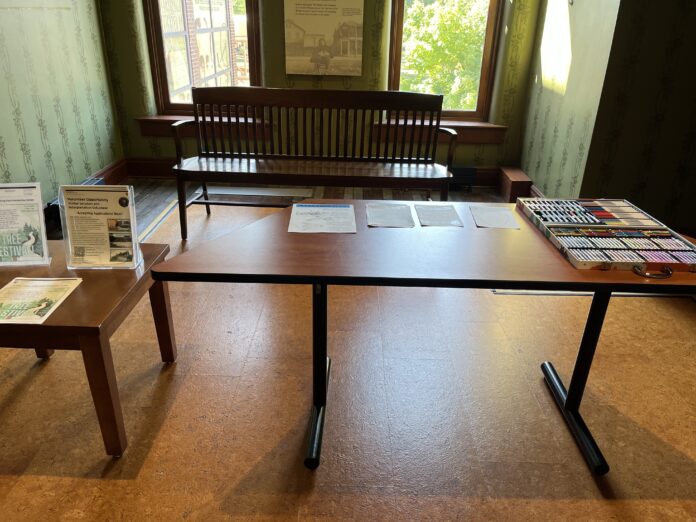The past few Saturdays have been long. Waking up at 8, ready by 9, on the road until 10:30, and on park grounds before lunch. Each visit to the Dayton Aviation Heritage National Historical Park brought something new to light, and it was a whirlwind of observational research, documentation, and interviews amidst the natural challenges of parking and directions. By the time my peer and I were finished, back on the I-70, we sat exhausted and silent. Save for the soft car radio, both of us were caught in our minds, processing the experience of the day, the things we would have to do when we got back, how to spin our findings into a reasonable project. There were so many ideas roaring in my head, things mixing and connecting and yet neither of us spoke a word. We each had so much to say but the feeling was stifled, as though we still expected more to be thrown at us, that we could not voice an opinion because we hadn’t experienced it all. Not to mention the pre-existing tumultuous journey one takes through the park. Pieces didn’t always line up, the history and the technology blurring together into a mental puzzle I had to solve. In that car ride home, it felt as though that was the exercise, figuring out where all the pieces lay in conjunction to me, leading to a silent car. And that, above all else, was unsatisfying. So then I started to wonder if maybe others experienced something similar to me.
Plainly, there is no planned “after-visit” experience. There is nothing that automatically tells a visitor they have seen it all, that puts it together into a cohesive story with the words “The End” at the bottom. There is nothing to tie me back to the experiences I had in the park, to let me know more about the history or to take a piece of the park with me. It took me four visits and an interview with the ranger in charge to realize that they did indeed have a park sanctioned after-visit experience, known to them as the pop-up programs. It was the curiously desolate room at the top of the stairs, with its single table covered in fliers and a few benches pushed against the bare walls, there in the Wright-Dunbar Visitor Center. There’s no fanfare, no engagement, and apparently no direct correlation to the park. I was baffled, so I researched.
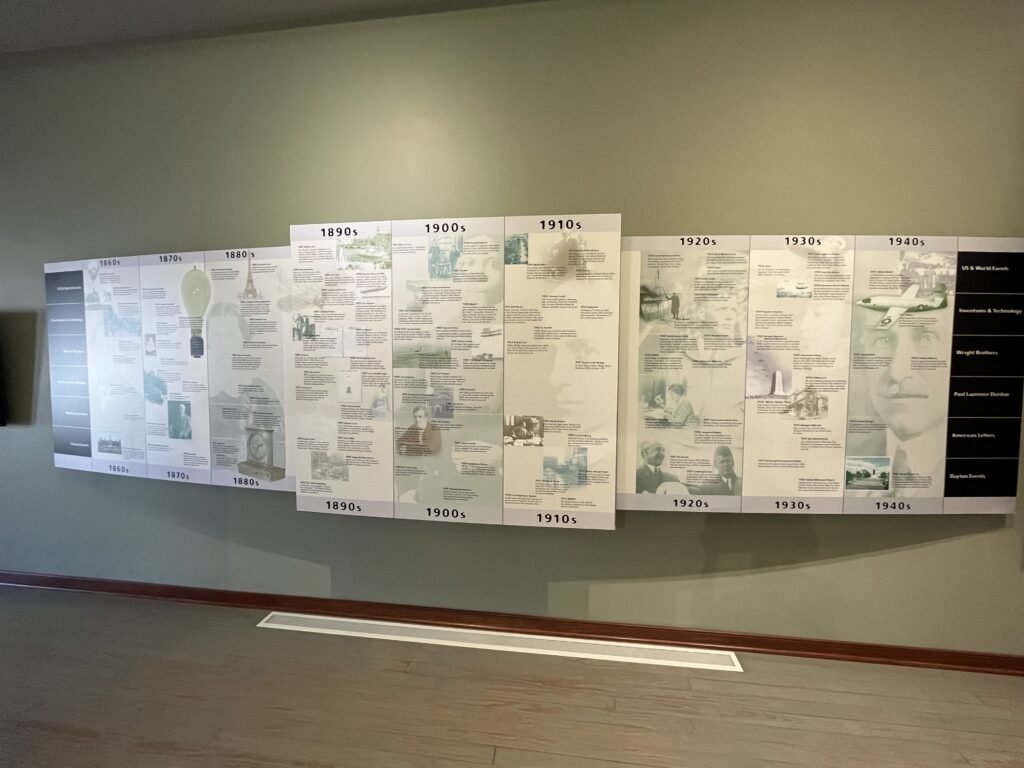
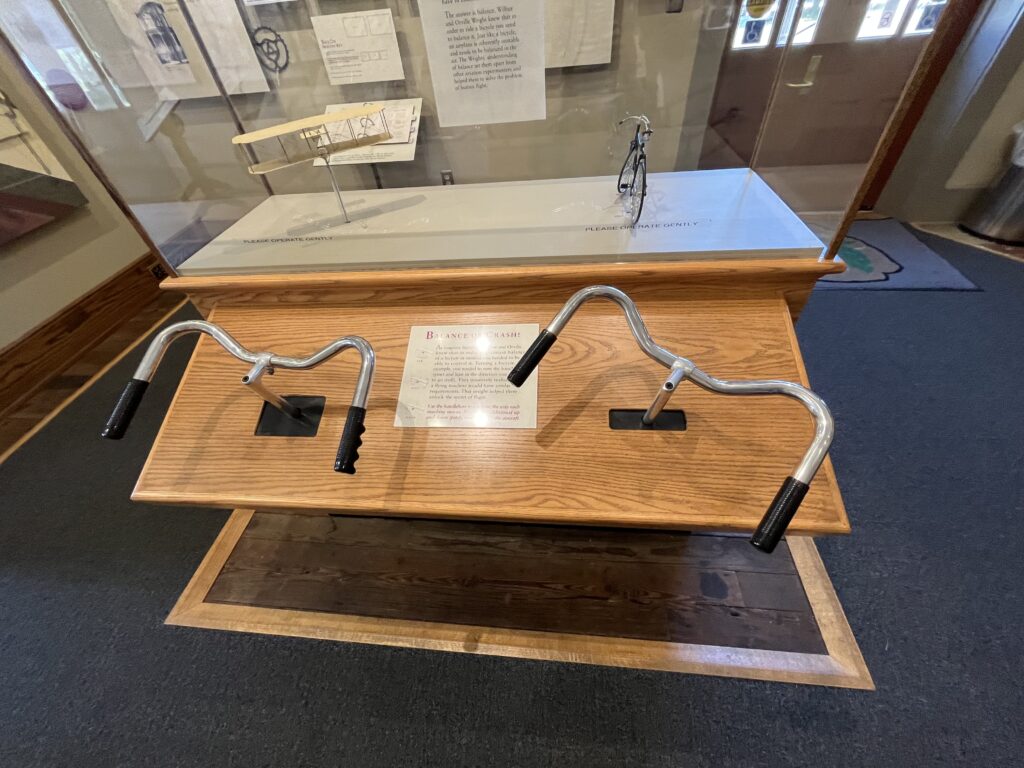
and plane steering
In my experiences in the park as a visitor, a guided tourist, and a researcher, I noticed that the park already boasted so many different kinds of attractions. There were artifacts to look at, blurbs to read, hands-on stations, audio recordings to listen to, films to watch, and immersive environments to recreate the time period of the Wright Brothers (and Paul Laurence Dunbar. However the scope of this project does not include the poet.). So many different ways to engage with varying degrees of success.
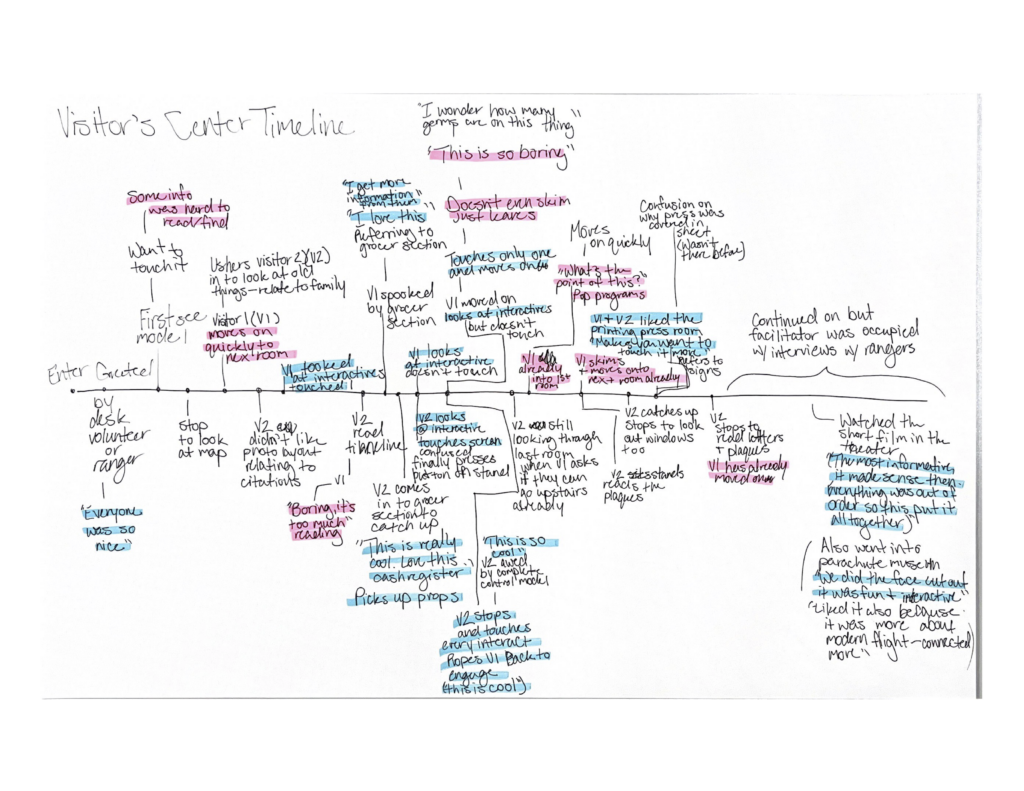
During my ethnographic style research, I shadowed two visitors as they moved through the park for the first time. I then took my findings and recorded them on an experience timeline to understand trends in joy and pain, highlighted in blue and pink respectively. There were so many instances of a visitor saying, “This is boring.” “There’s too much reading.” “I don’t want to read all of this.” Clearly the reading was not a very effective method of captivating the audience.
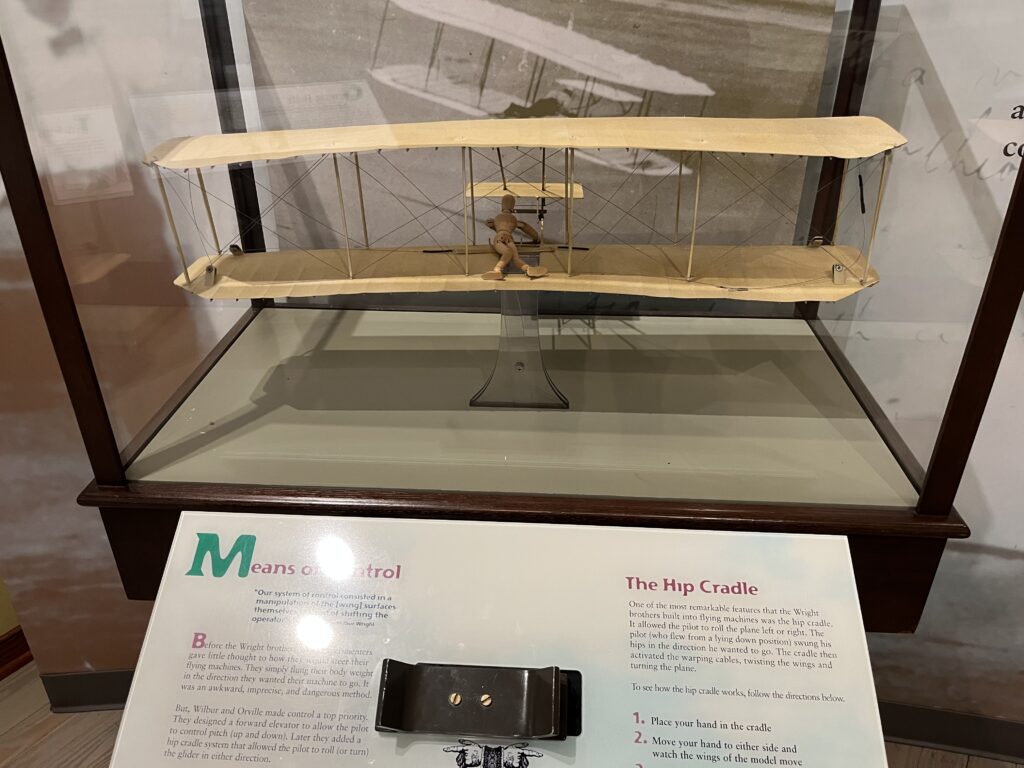
On the other hand, the interactive attractions reeled them right in. My second visitor was much more keen to touch and play with the exhibits, and stopped to do so, giving them time to absorb the information. They even whispered “This is so cool!” under their breath as they played with the model. There was wonderment and awe. Visitor one did not touch as many out of a dislike for germs, but at the very least those attractions got a second look.
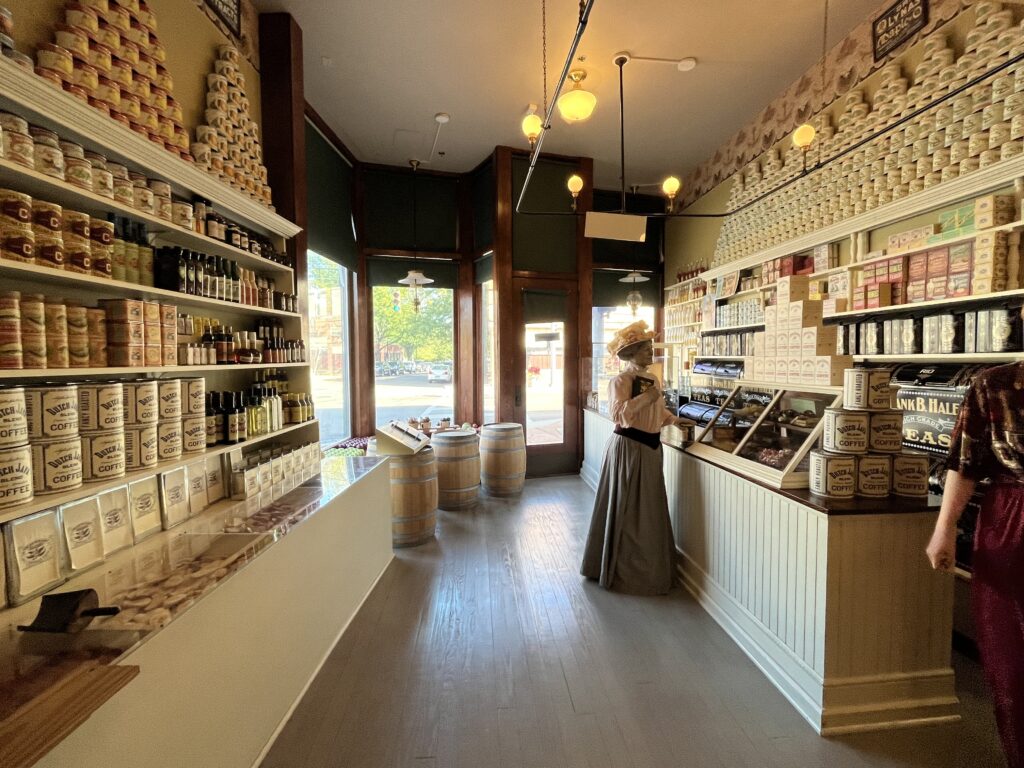
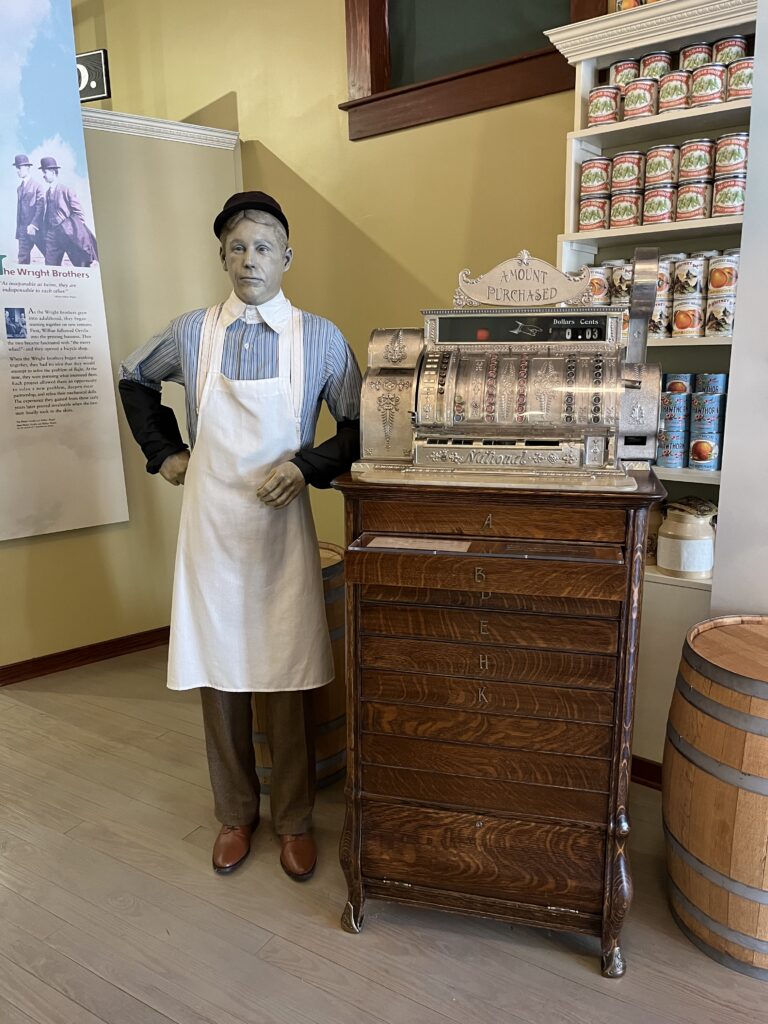
The biggest hit by far was the old-timey grocery store in the visitor center. With an old cash register with a Wright Brother check, a woman at the til, and cans of product, there was so much to take in and listen to. On top of being examples of 19th century life, the mannequins will gossip about the Wright Brothers with you, folding you in like nosy neighbors. They stood through the small speeches prepared for visitors, touched the touchable props, and willingly stood to take it all in.
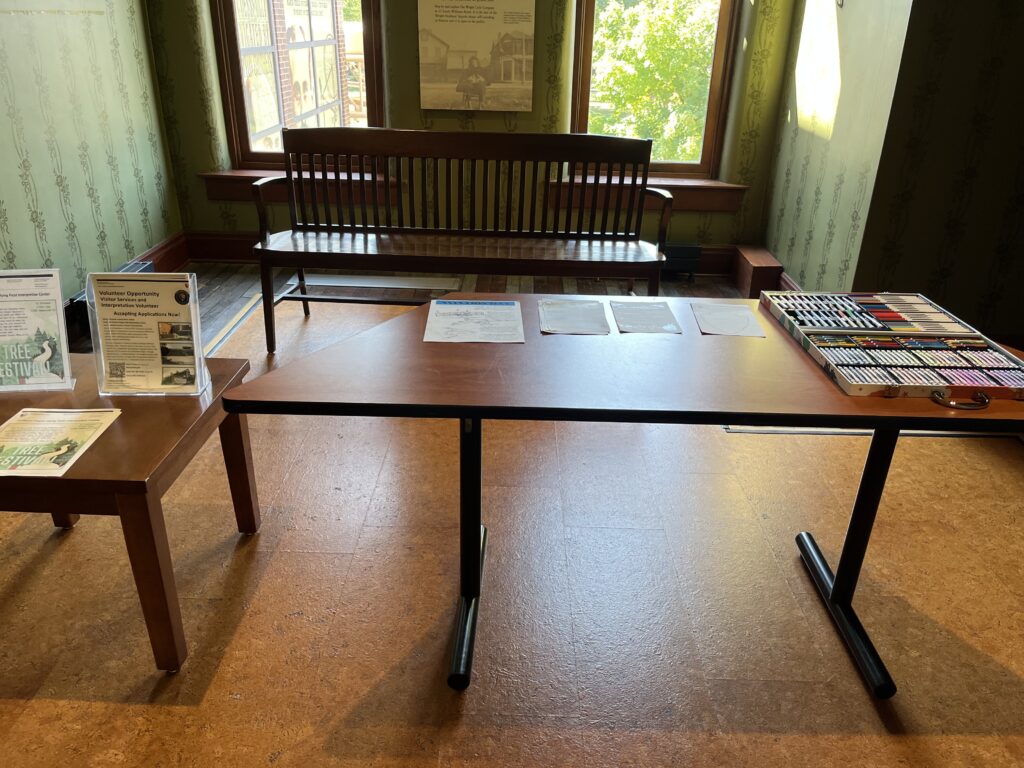
The after-visit activities were not given the same treatment. As we crested over the stairs, to the left of us sat the unassuming fliers in their dreary room. Visitor one took one look at this set-up, whispered to me, “What’s the point of this?” and walked off in pursuit of the other more visually stimulating attractions on the other side of the landing. Visitor two didn’t even glance at it.
During my interview with Ranger Misich, the woman in charge of the pop-up programs, she explained to me that they are small activities that can be taken outside of the park to keep learning about the Wright Brothers, Dunbar, and aviation. She does all of it, from the information to the layout to the print. “We don’t always have the ability to have staffing to run five minute [programs]…” she said, “We have three centers to run.”
That must be tough to take on so many odd-jobs, but at least it is straightforward and they’re just coloring pages about the Wright Brothers, Dunbar, or aviation, right?
“I look at what’s happening that month…This month there’s one for the air force’s birthday, and then there’s one about Broadway…[and for] International Underground Railroad Month. So just picking those things that relate to our park.” I was surprised that the rules are so loose, and perhaps they do the park a disservice by not doubling down on the information already given in the park.
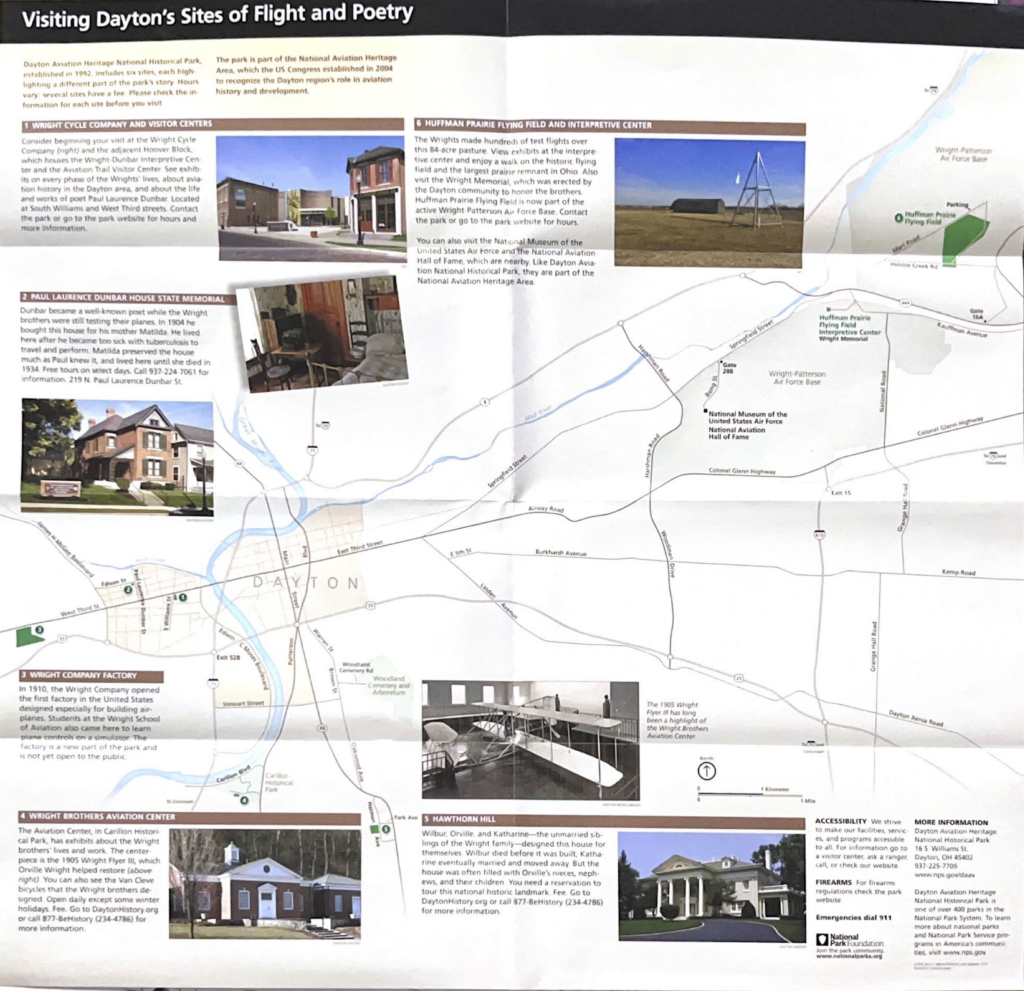
As my visitors and I continued on our journey after the first visitor center, the next discrepancy came to light. Dayton Aviation Heritage National Historical Park is a little interesting by having the park locations spread throughout Dayton, so driving between places is a big part of the journey. On the park map, they list out the locations in an order, the proposed tour list with the Wright-Dunbar Visitor Center first. How strange then, to have the experience you take with you after your visit in the very first location.
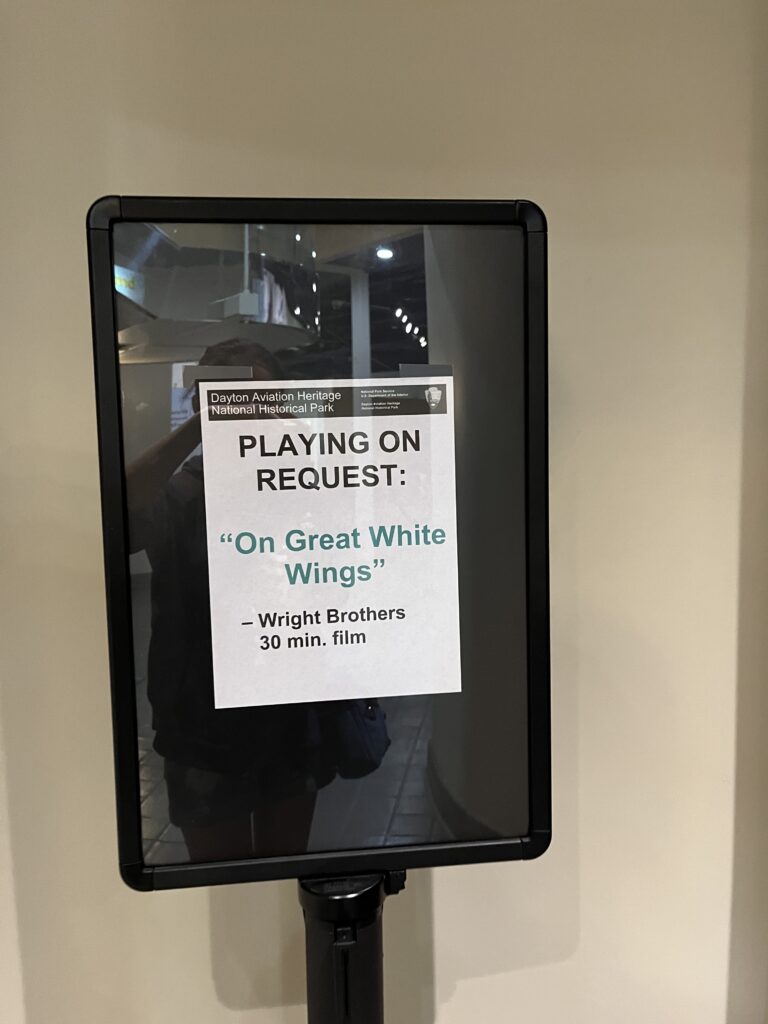
It was on the way back home, after three more locations, that my visitors shared another important nugget of information on their experience as a whole. They both agreed on struggling to understand both the story the park was trying to tell and the point of their trip, until I was running late with my interviews with the rangers and they caved and watched the park’s film. It suddenly clicked, the journey and the history combining into a comprehensible, satisfying conclusion. They were able to end their visit well thanks to a tool that spelled it out for them in no uncertain terms, but I noticed that it was something they would not have previously done had I ended on time. It was the fact that they were bored that finally pushed them to ask for the film, and they had to go out of their way to create their finale.
The park imparted on us, the students, but one goal: Get people inspired about aviation. I believe that the park already has so much to marvel at, but nothing of substance to follow up that journey, and therein an opportunity lies.
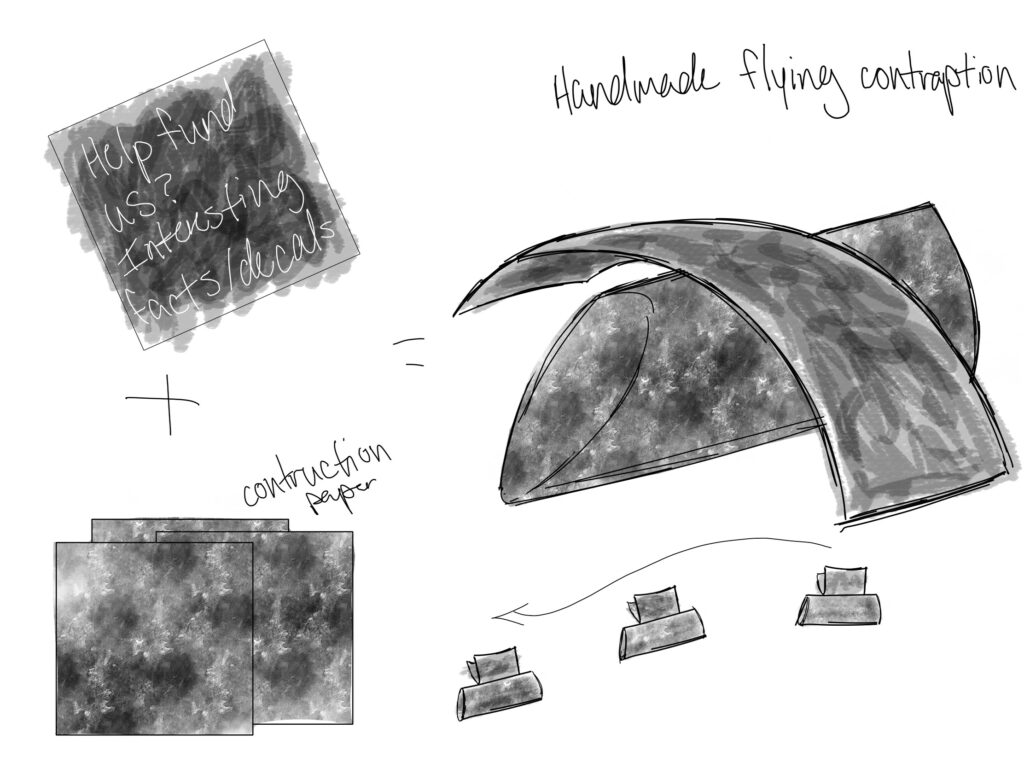
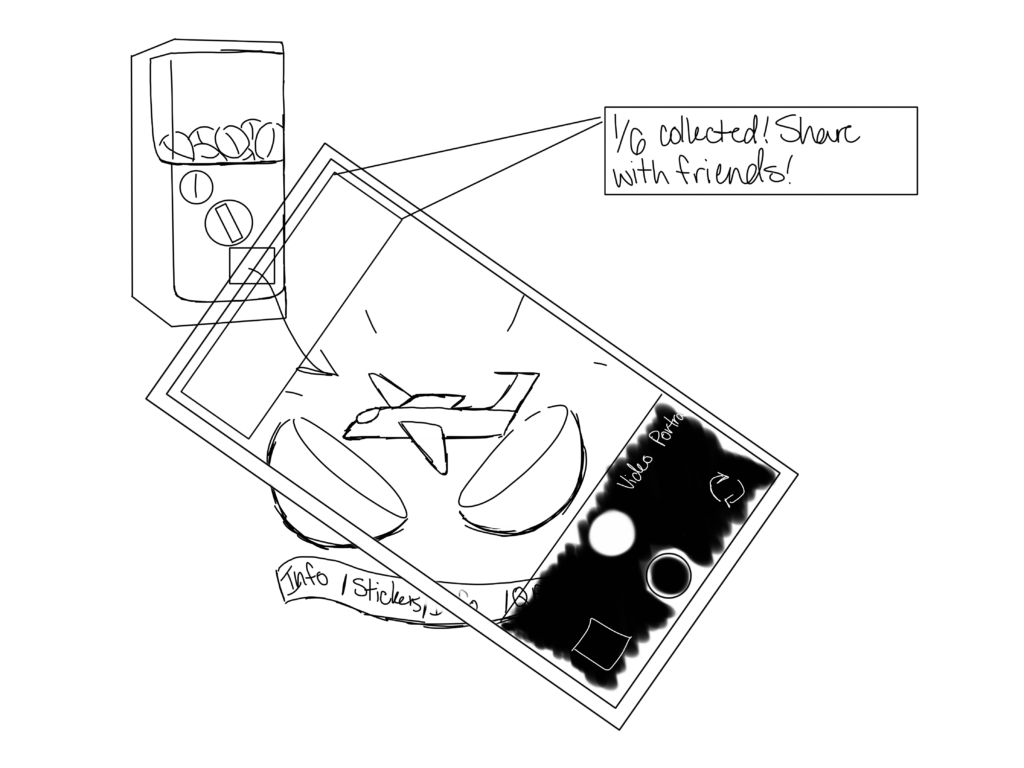
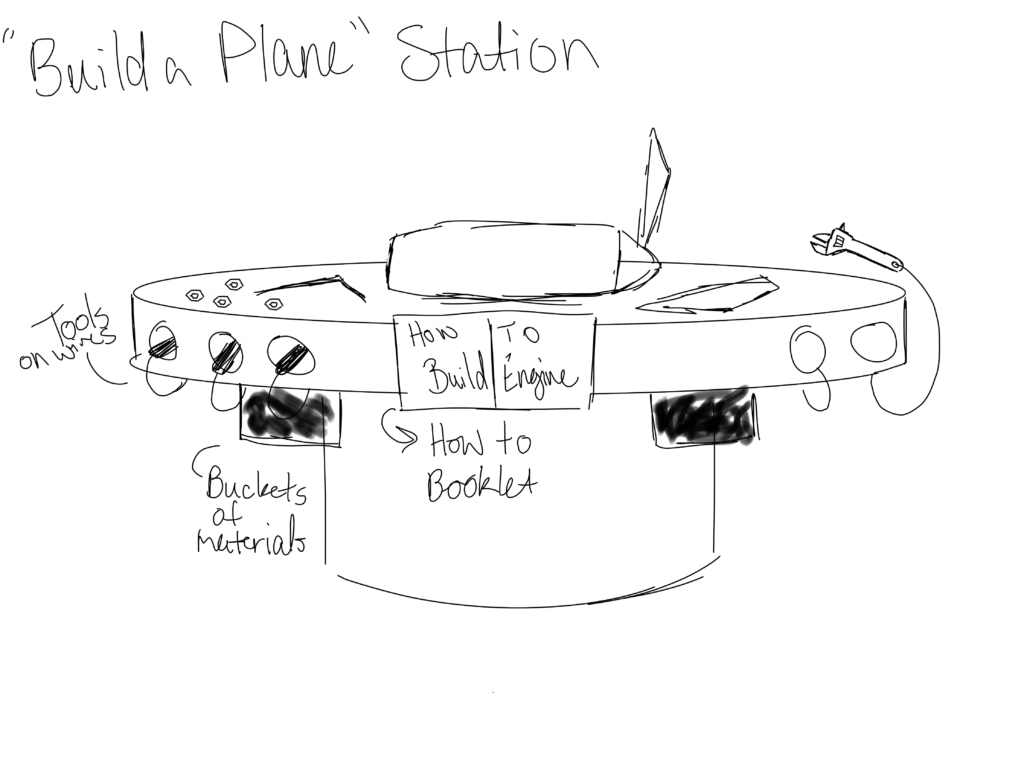
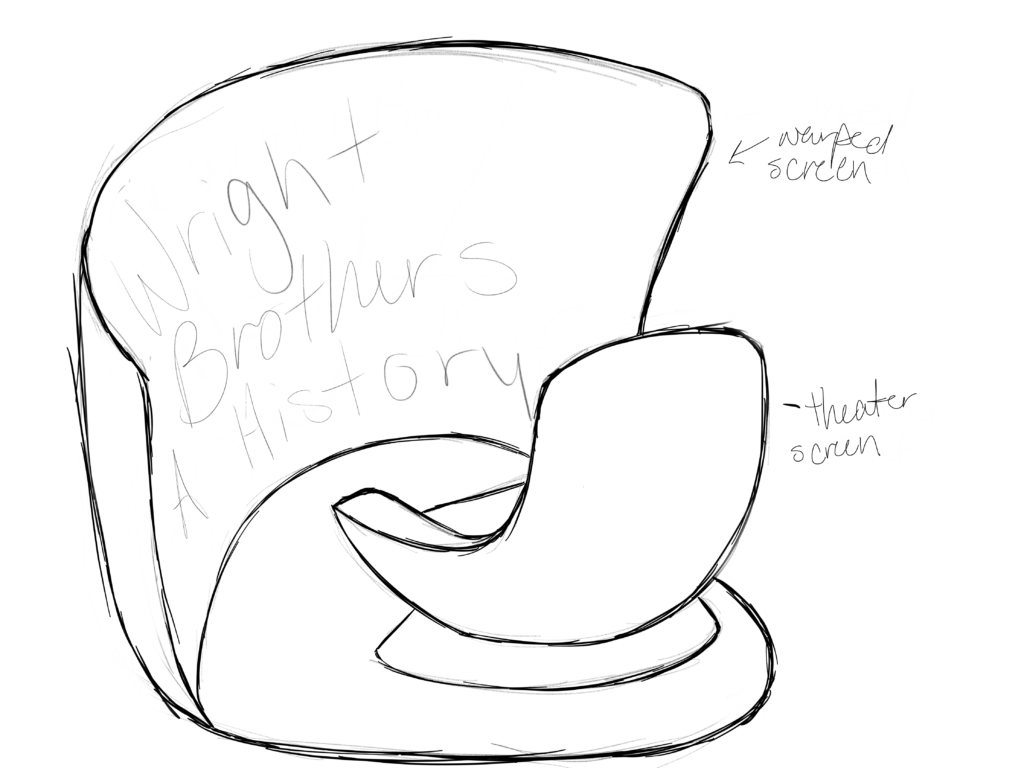
I admit that my conjectures were created at a time of general confuddlement about the purpose I could give my capstone, but with my newfound lens I was able to re-examine my conjectures to analyze where the problems are. In my conjectures on small toys, I saw the way it was entertaining and easy to replicate. They were both hands-on experiences, requiring the user to engage with the object both to create it and in playing with it. I saw the way they were convenient and easily implemented products, but they did not answer for the environmental impact they would still have. They were novel to the point of obsolescence, lasting no longer than perhaps a day to the user. My last two conjectures focused on an experience within the park. Both focused heavily on the community aspect, and encouraged spending more time in the park. However that was short-sighted of me, just because a visitor is spending more time in the park does not mean they are having a better time. Not to mention these ideas would require park maintenance and supervision to operate, something the park could not spare even on a good day.
And so the objective stands. The park’s current pop-up programs are not located well as an after-visit experience, they do not directly connect with the information in the park, are presented in a way that begs to be forgotten, and no one has any clue what they are and what to do with them.

